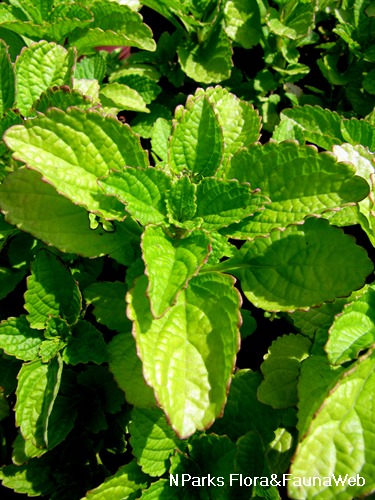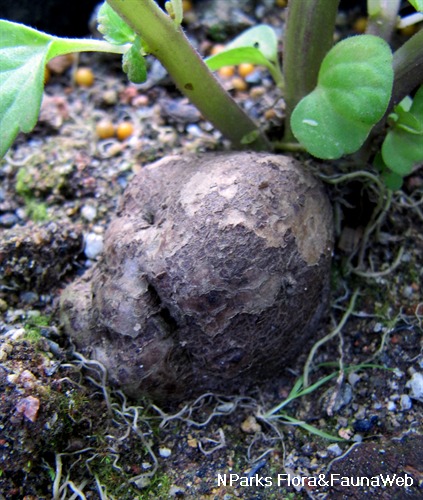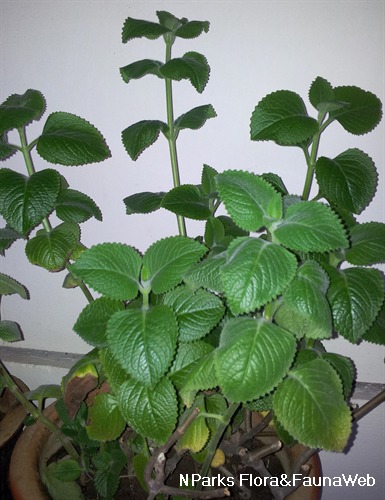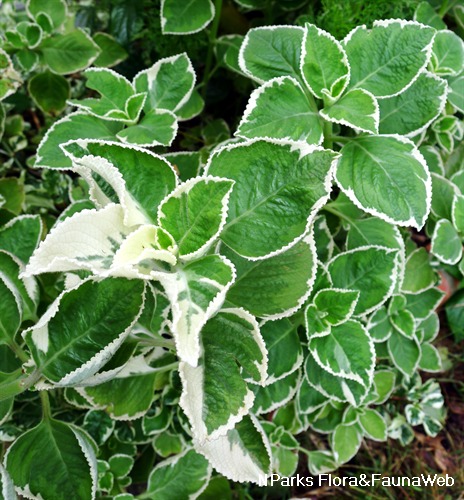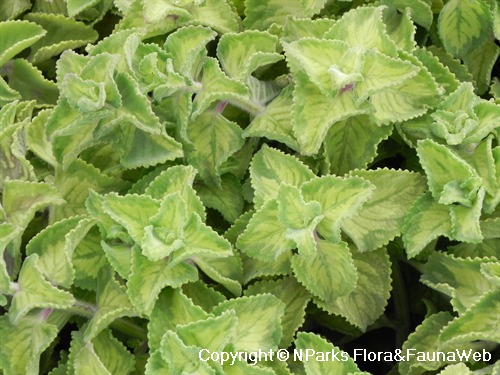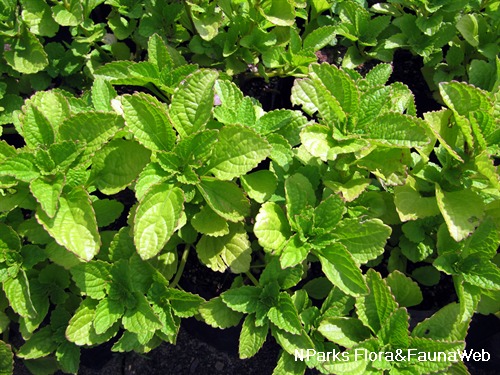
Back
Coleus rotundifolius (Poir.) A.Chev. & Perrot
| Family Name: | Lamiaceae (Labiatae) |
| Synonyms: | Plectranthus rotundifolius (Poir.) Spreng., Solenostemon rotundifolius (Poir.) J.K.Morton |
| Common Name: | Chinese Potato, Hausa Potato, Frafra Potato, Country Potato, Madagascar Potato |
Name
Classifications and Characteristics
| Plant Division | Angiosperms (Flowering Seed Plants) (Dicotyledon) |
|---|---|
| Plant Growth Form | Herbaceous Plant |
| Lifespan (in Singapore) | Perennial |
| Mode of Nutrition | Autotrophic |
| Plant Shape | Shrubby |
| Maximum Height | 0.6 m |
| Maximum Plant Spread / Crown Width | 0.4 m |
Biogeography
| Native Distribution | Tropical Asia |
|---|---|
| Native Habitat | Terrestrial |
| Preferred Climate Zone | Tropical, Sub-Tropical / Monsoonal |
| Local Conservation Status | Non-native (Horticultural / Cultivated Only) |
Description and Ethnobotany
| Growth Form | Perennial herb up to 1 m tall. Often grown as an annual crop. |
|---|---|
| Roots | Roots form egg-shaped to elongated tubers which resemble potatoes (4.5 cm long, 1.5 cm wide). The skin is rough and may be black, brown, reddish grey, or white. |
| Foliage | Thick, fleshy leaves are egg-shaped to approximately round with somewhat oily texture (2-6 cm long, 1.5-4 cm wide). They have a fragrance like black pepper. |
| Stems | Stems are 4-sided and densely hairy along the 4 corners of the stem. |
| Flowers | Two-lipped, blue flowers are arranged in clusters around a spike inflorescence. |
| Cultivation | It grows best in well-drained sandy loam with regular watering. The tuber is ready for harvesting 5-7 months after planting. |
| Ethnobotanical Uses | Edible Plant Parts : Edible Storage Organs Food (Fruit or Vegetable): The tubers are eaten as a relish with a starchy staple food. They are often roasted or cooked with spices in various combinations with other foods. The tuber can also be used to make flour for bread and pastries, potentially increasing food security. <1> Medicinal: Traditional Medicinal Uses The leaves are used in traditional medicine for the treatment of dysentery in Nigeria. The plant is also used to treat blood in the urine as well as eye disorders. It is important to note that some therapeutic effects from traditional medicinal uses of plants are not currently supported or verified by scientific research. |
Landscaping Features
| Landscape Uses | General, Container Planting |
|---|---|
| Thematic Landscaping | Economic Garden |
Fauna, Pollination and Dispersal
| Pollination Method(s) | Biotic (Fauna) |
|---|
Plant Care and Propagation
| Light Preference | Full Sun |
|---|---|
| Water Preference | Moderate Water |
| Plant Growth Rate | Fast |
| Rootzone Tolerance | Drought Tolerant, Moist Soils, Well-Drained Soils |
| Propagation Method | Seed, Stem Cutting (Softwood), Storage Organ (Root Tuber) |
Foliar
| Foliage Retention | Evergreen |
|---|---|
| Mature Foliage Colour(s) | Green |
| Mature Foliage Texture(s) | Rough, Thick |
| Foliar Type | Simple / Unifoliate |
| Foliar Arrangement Along Stem | Opposite |
| Foliar Attachment to Stem | Petiolate |
| Foliar Shape(s) | Non-Palm Foliage (Ovate) |
| Foliar Venation | Pinnate / Net |
| Foliar Margin | Dentate, Crenate |
| Foliar Apex - Tip | Acute, Obtuse |
| Foliar Base | Cuneate |
Floral (Angiosperm)
| Flower & Plant Sexuality | Bisexual Flowers |
| Flower Colour(s) | Purple, Blue |
|---|---|
| Flower Grouping | Cluster / Inflorescence |
| Flower Location | Terminal |
| Flower Symmetry | Bilateral |
| Individual Flower Shape | Labiate / Lipped |
| Inflorescence Type | Spike |
References
| References | <1> Tortoe, C., Akonor, P.T., Kusi, F., Anabire, P.A., Owusu, R.K. & Boateng, C. (2020). Unearthing the potential of the Frafra potato (Solenostemon rotundifolius) flour in culinary application: Sensory and nutritional analysis of its pastry products. Journal of Culinary Science & Technology 18(1): 1-12. |
|---|
Image Repository
Others
| Master ID | 31384 |
|---|---|
| Species ID | 5781 |
| Flora Disclaimer | The information in this website has been compiled from reliable sources, such as reference works on medicinal plants. It is not a substitute for medical advice or treatment and NParks does not purport to provide any medical advice. Readers should always consult his/her physician before using or consuming a plant for medicinal purposes. |

